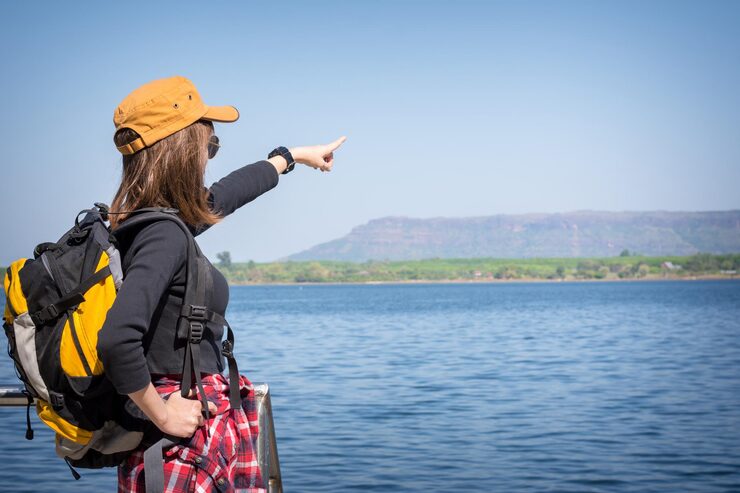Travel Solo Travel Safety Tips are essential for anyone venturing alone into new destinations. Solo travel offers unmatched freedom, self-discovery, and adventure, but it also comes with challenges that require preparation, awareness, and smart decision-making. By understanding potential risks and adopting practical safety measures, independent explorers can maximize enjoyment while minimizing hazards.
Planning Ahead for Safe Solo Journeys
Proper planning is the foundation of safe solo travel. Researching destinations, understanding local customs, and checking safety ratings for neighborhoods are crucial first steps. Booking accommodations in well-reviewed areas, arranging airport transfers in advance, and having emergency contacts prepared can prevent unnecessary stress.
Technology aids in planning as well. Mobile apps for navigation, currency exchange, and emergency assistance provide a safety net while exploring unfamiliar places. Using Travel Solo Travel Safety Tips, travelers can anticipate challenges before departure, ensuring smoother and more confident journeys.
Staying Aware in Public Spaces
Situational awareness is key for solo travelers. Paying attention to surroundings, avoiding isolated areas, and trusting instincts can prevent potential dangers. Simple actions, such as keeping belongings close, dressing inconspicuously, and limiting use of smartphones in public, increase security.
For example, an independent traveler in a bustling city may choose to avoid quiet alleyways at night and use reputable rideshare services. These precautions align with Travel Solo Travel Safety Tips and highlight the importance of vigilance without sacrificing the enjoyment of exploration.
Managing Transportation Safely
Transportation is often a critical factor in solo travel safety. Using registered taxis or rideshare apps, checking public transportation schedules, and confirming routes in advance helps avoid confusion and risky situations.
When renting vehicles, solo travelers should ensure proper insurance coverage and familiarize themselves with local traffic laws. In countries with unfamiliar driving customs, public transportation or guided tours may provide safer alternatives. These steps are practical examples of Travel Solo Travel Safety Tips in action.
Securing Accommodations
Choosing safe lodging is paramount. Selecting hotels, hostels, or vacation rentals with positive reviews, security measures, and good lighting reduces exposure to risk. Locking doors, using safes for valuables, and understanding emergency exits further enhance personal security.
Staying in accommodations that offer social spaces can also provide opportunities to meet fellow travelers safely. Sharing experiences and information about local conditions can be a valuable layer of security. (Travel Solo Travel Safety Tips)
Health and Emergency Preparedness
Health considerations are crucial for solo travelers. Carrying first-aid supplies, knowing the location of nearby hospitals or clinics, and understanding local health advisories ensures preparedness for unexpected situations.
Travel insurance is another essential component. Policies covering medical emergencies, theft, and travel interruptions provide peace of mind. Being proactive about health and emergency readiness is a core principle of Travel Solo Travel Safety Tips.
Cultural Awareness and Respect
Respecting local customs, laws, and social norms enhances safety and enriches the travel experience. Awareness of local etiquette, dress codes, and communication styles prevents misunderstandings and potential conflicts.
Solo travelers should research sensitive areas, avoid political demonstrations, and approach unfamiliar cultural practices with curiosity rather than judgment. Integrating cultural intelligence into daily routines aligns with Travel Solo Travel Safety Tips, fostering positive interactions with locals.
Using Technology to Stay Connected
Modern technology provides tools to enhance safety for solo travelers. Mobile phones with GPS tracking, emergency apps, and translation tools allow for real-time communication and navigation. Sharing itineraries with trusted friends or family ensures someone is aware of movements and can provide support if needed.
Social media can also be useful for discovering safe venues, community events, and traveler insights, though discretion is advised to avoid broadcasting locations publicly. Smart use of technology amplifies confidence and security during solo exploration. (Travel Solo Travel Safety Tips)
Building Confidence Through Preparedness
Confidence is one of the most valuable aspects of solo travel. Knowledge of safety practices, familiarity with surroundings, and planning for contingencies empowers travelers to handle unexpected challenges calmly.
For instance, a solo hiker in a remote area benefits from understanding local wildlife, trail conditions, and emergency communication protocols. Such preparedness is at the heart of effective Travel Solo Travel Safety Tips, transforming potential risks into manageable experiences.
Real-Life Examples of Safe Solo Travel
Many independent explorers demonstrate the effectiveness of proactive safety measures. A solo traveler navigating Southeast Asia may rely on trusted transportation apps, avoid walking alone at night, and secure accommodations in well-monitored areas. Another example could involve a European city traveler who uses local guides for cultural tours while staying in central locations to reduce risk exposure.
These examples illustrate how careful planning, awareness, and technology combine to create safe and rewarding solo travel experiences.
Adapting to Changing Situations
Flexibility is vital for solo travelers. Weather disruptions, transportation delays, or sudden safety advisories require adaptability. Maintaining alternative plans, keeping emergency funds, and knowing local contacts allow travelers to respond effectively.
Solo travel often involves spontaneous opportunities. Being prepared enables travelers to seize experiences confidently while adhering to Travel Solo Travel Safety Tips, balancing adventure with safety.
Maintaining Personal Safety Routines
Daily routines contribute significantly to solo traveler safety. Checking in with contacts, carrying essential identification, monitoring surroundings, and pacing oneself during excursions prevent accidents and reduce exposure to risk.
Regularly reviewing accommodations, transportation, and local advisories ensures updated awareness. Integrating these habits into travel routines exemplifies the proactive mindset encouraged by Travel Solo Travel Safety Tips.
Read also:
6.5 lpa in hand salary
7.5 lpa in hand salary
3.5 lakh per annum in month
2.5 lakh per annum in month
true family rishte shayari
suvichar gujarati ma
nature shayari

